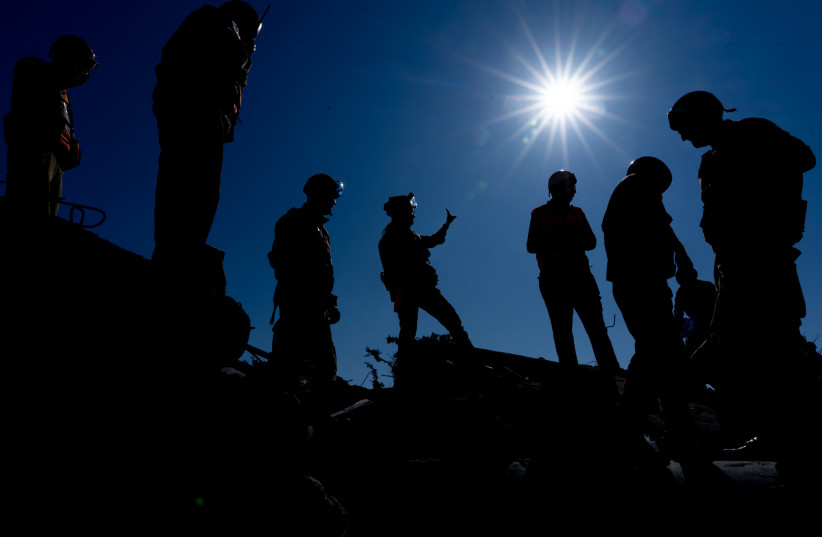An earthquake rattled Israel’s North on Saturday, with a magnitude of 3.8 on the Richter scale, occurring at a depth of more than 17km.
The quake was confirmed by the Energy and Infrastructure Ministry, which cited the National Geological Institute.
Residents of Haifa, the Sharon region, and the Lower Galilee reported shaking windows, but the municipality said that no damage was reported as result of the quake, and there are no known injuries as a result of it.
It came following another, magnitude 3.4 earthquake just over a week ago, triggering alarms at several locations throughout the Jordan Valley, prompting orders that residents evacuate.
“It really felt like a wave,” one resident testified. “It sounded likes something moving far away, and then the ground moved with the chair and things on the table started shaking.”

Israel Police repeat earthquake guidelines
The Israel Police reminded Israelis of what to do when an earthquake strikes.
Those who are inside are instructed to leave the building if possible. If they cannot exit the building in a few seconds, then they are advised to enter their protected room (also used for rocket attacks) and to keep the door and the windows open, or to enter the stairwell and descend to the building’s exit.
If none of these is possible, one is advised to sit in an enclosed corner, or under something sturdy, and cover one’s head with one’s hands.
Those who are outside are advised to remain in an open space and to distance themselves from buildings, trees, power lines, and anything that might fall and pose a danger to them.
Those who are driving are instructed to stop their car on the side of the road and remain inside it until the earthquake stops. One must avoid stopping underneath a bridge or at an interchange.
Anyone near a beach should remove themselves at least one kilometer from the beach. If it is not possible to leave the beach, one should go up to the fourth floor or higher of a nearby building.
Israel is due for a large earthquake
Israel has small earthquakes regularly, but is largely believed to be ‘due’ for a major one.
A report by the State Comptroller in January stated that “a strong earthquake in Israel is a matter of time,” and that “the state is still not adequately prepared.”
Only 3.5% of vulnerable buildings have been reinforced, and only about 5% of schools are reinforced. About 40% of hospitals are reinforced.
The Joint Inter-Ministerial Committee for Earthquake Preparedness operates with three permanent employees, and it lacks the legal authority to enforce its directions.
Israel is located on a fault line
Israel, which is situated along the Syrian-African fault line, has a history of major earthquakes roughly once every hundred years, according to experts, although the degree to which earthquakes are cyclical is disputed.
The last major earthquake to strike Israel was in 1927, with an epicenter near Jericho.
Measuring 6.2 on the Richter scale, the quake killed almost 500 people and injured an additional 700.
Ninety years prior, another large earthquake, on January 1, 1837, measured a magnitude 6.5 on the Richter scale and struck in the Galilee near Safed. It killed an estimated 6,000 to 7,000 people due to a subsequent landslide.
Anna Ahronheim and Maayan Jaffe-Hoffman contributed to this report.
